"All About Cassowaries" • PCF Sparkletots Preschool @ Braddell Heights Blk 417
Objectives
Through this project, the children were given opportunities to:
- Find out about the characteristics and living habits of the cassowary
- Express their thoughts and ideas through artworks and writing of a class story about the cassowary
- Develop confidence in speaking and communicating with others as they shared their knowledge about the cassowary
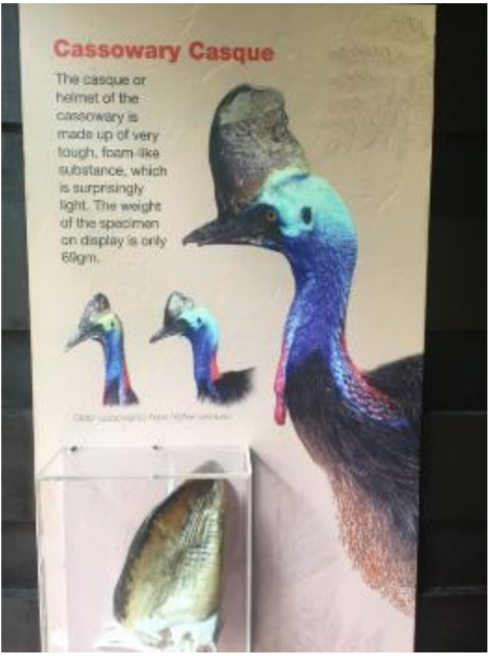 | 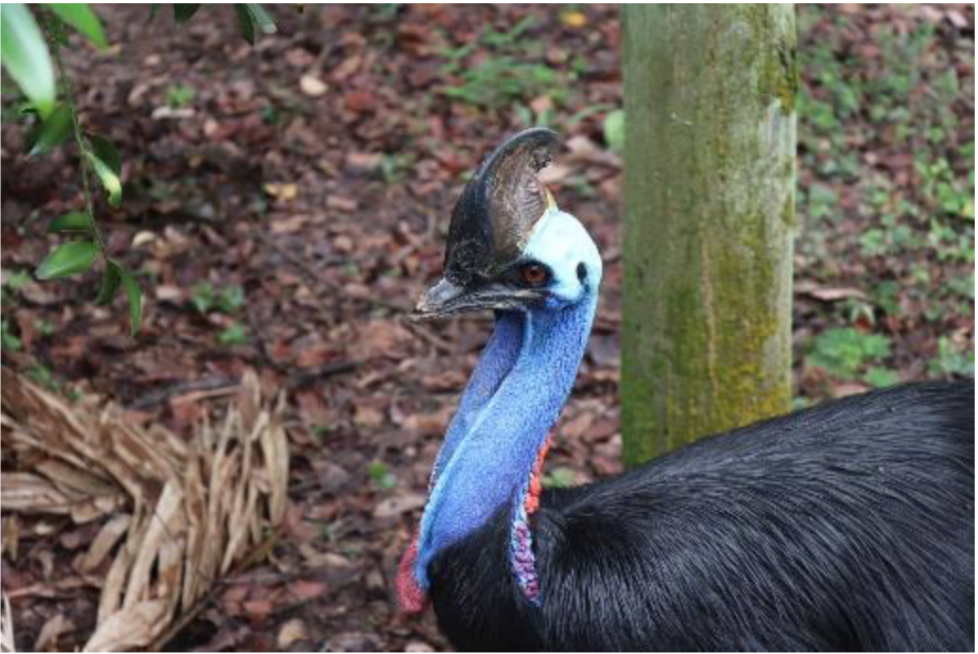 |
|---|
1. Finding out about the cassowary
While talking about the topic of animals around them, the children expressed interest to find
out more about birds. The children took particular interest in flightless birds, especially the
cassowary as it has unique body colours. They showed eagerness in finding out more about this
special bird.
The children learned about the cassowary through books, photographs and videos that were carefully selected by the teachers. They were encouraged to ask questions whenever they were in doubt or suggest ways to explore and discover more about the cassowary (e.g. the colour and body parts of the cassowary, what the cassowary eats, where the cassowary lives, how the cassowary moves and their lifecycle).
The children recorded their observations based on what they had read, seen and listened through drawings and writing.
The children also explored moving like a cassowary during a Music and Movement activity. The movements included
pecking of the neck, stretching of the legs and wobbling of the head.
The children then played a relay game where they used different body movements to express the different stages of the cassowary’s life. For example, the cassowary hatchling was depicted by placing their fists under their underarm while the adult cassowary was depicted with their palms faced up on their head as they walked like a cassowary.
To give the children an authentic learning experience, our centre partnered with Wildlife Reserves Singapore who tailored a workshop for the children and arranged for them to have a personal encounter with a cassowary
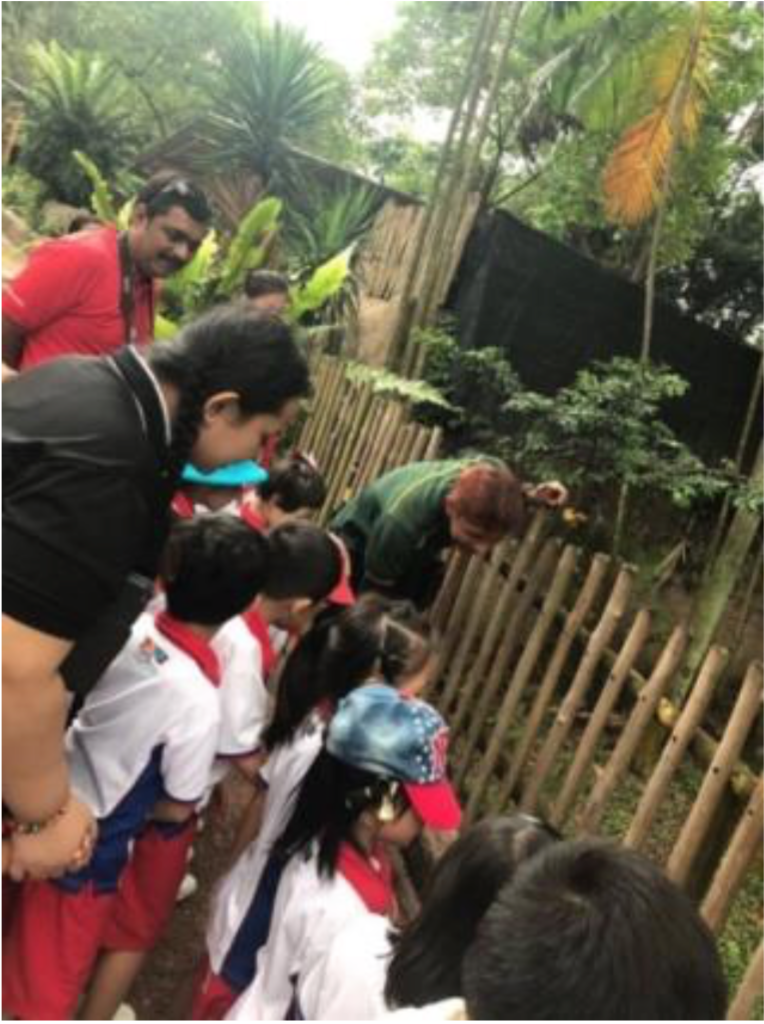
The children learned about the cassowary through books, photographs and videos that were carefully selected by the teachers. They were encouraged to ask questions whenever they were in doubt or suggest ways to explore and discover more about the cassowary (e.g. the colour and body parts of the cassowary, what the cassowary eats, where the cassowary lives, how the cassowary moves and their lifecycle).
The children recorded their observations based on what they had read, seen and listened through drawings and writing.

|

|
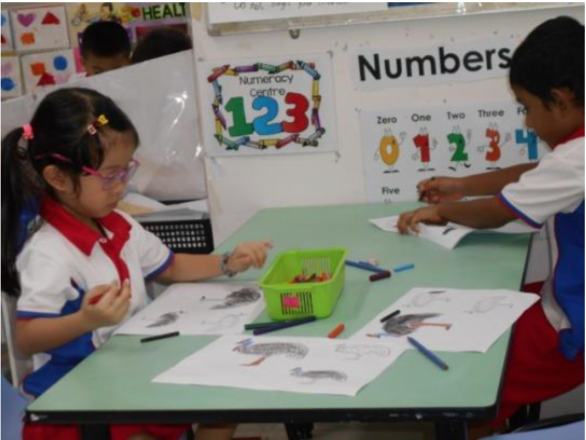
|
|---|---|---|
| Children learned about the cassowary through books. | Children watched a video to find out about the cassowary's habitat. |
Children recorded their observations about the cassowary through drawing and writing.
|
The children also explored moving like a cassowary during a Music and Movement activity. The movements included
pecking of the neck, stretching of the legs and wobbling of the head.
The children then played a relay game where they used different body movements to express the different stages of the cassowary’s life. For example, the cassowary hatchling was depicted by placing their fists under their underarm while the adult cassowary was depicted with their palms faced up on their head as they walked like a cassowary.
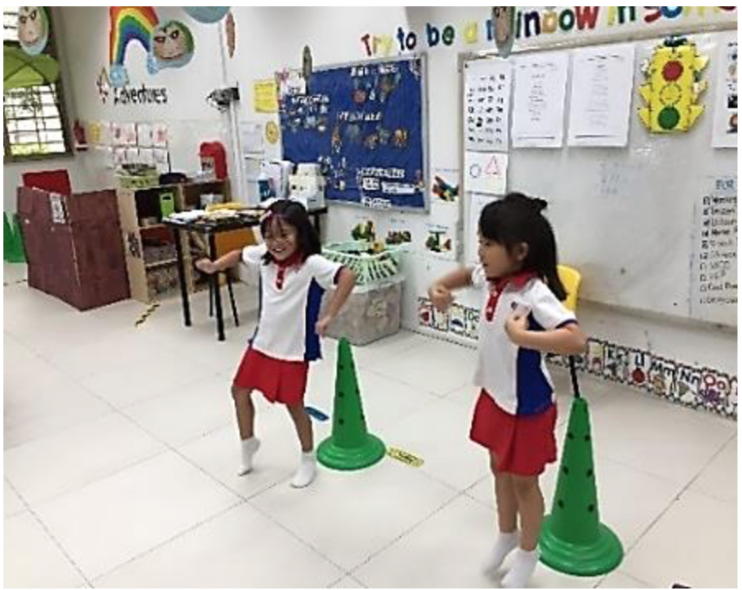
|
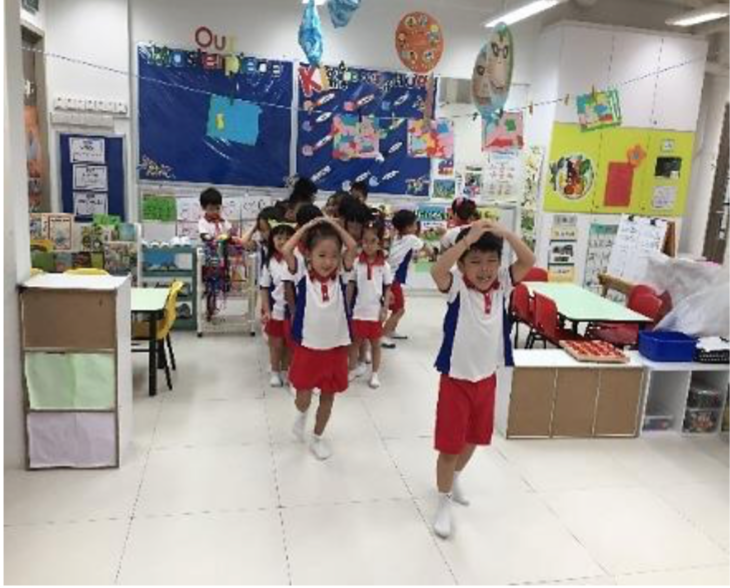
|
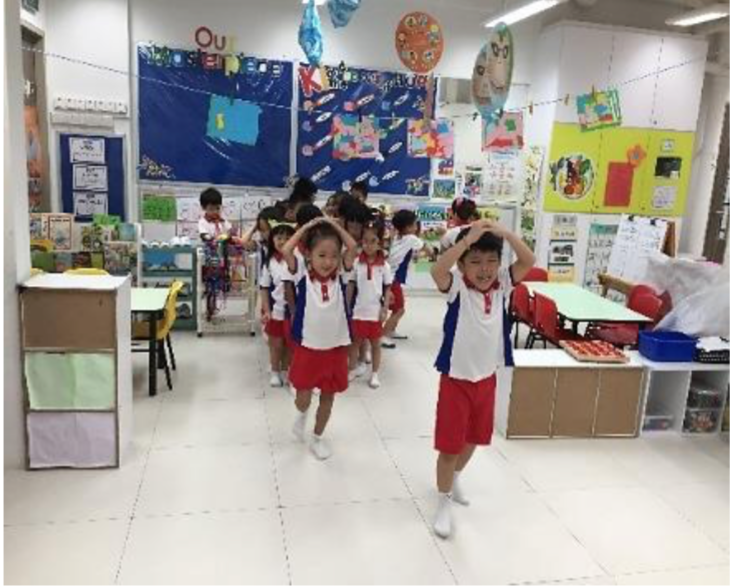
|
|---|---|---|
| Children mimicked how a cassowary moves during a Music & Movement activity | Children played a relay game to express the different stages of the cassowary’s life. | |
To give the children an authentic learning experience, our centre partnered with Wildlife Reserves Singapore who tailored a workshop for the children and arranged for them to have a personal encounter with a cassowary
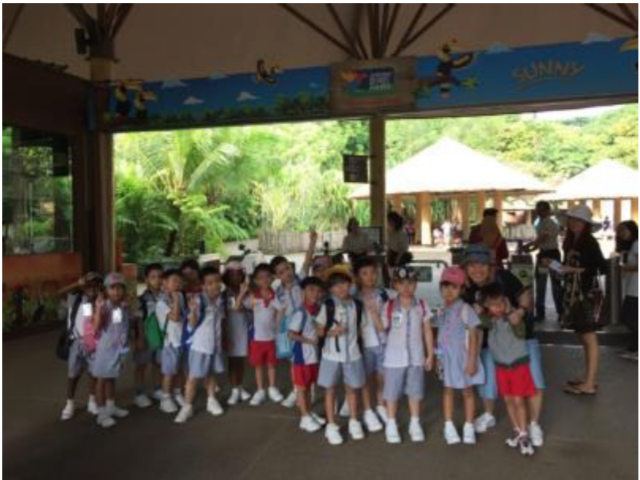
|
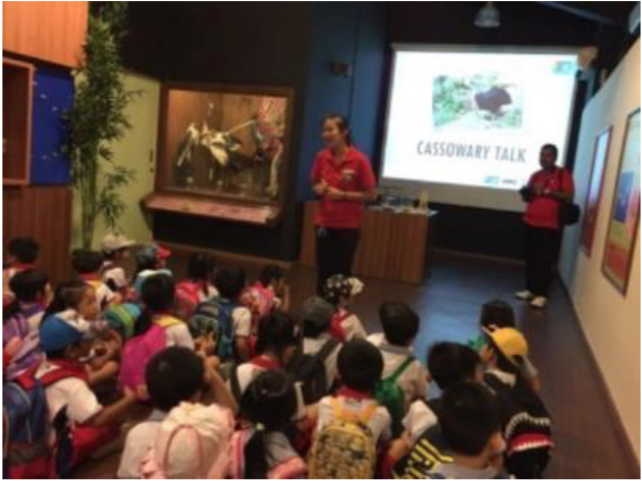
|
|---|---|
| Children arrived at Jurong Bird Park. | Children attended a talk on the cassowary. |

|
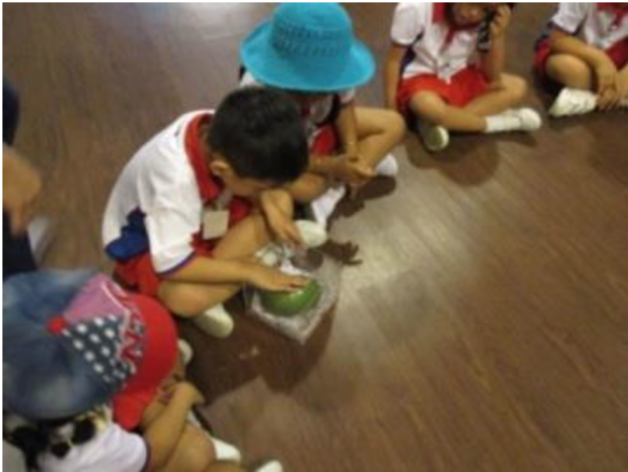 |
|---|---|
| Children examined artifacts related to a cassowary. | |

Children closely observed a cassowary
2. Expressing ideas and thoughts about the cassowary
After learning about the cassowary through
various activities, the children created a 3D
artwork to show what they have learnt about
the cassowary.
The children made use of different recycled
materials contributed by parents and the
community to create their artwork.
Their works were displayed in the class.
The children worked together to create a class story, "The Crown of the Cassowary". based on their imagination of how the casque on the head of the cassowary came about. Some children drew, some coloured, while others wrote the lines in the story.
Their works were displayed in the class.
| Children created the body of the cassowary using garbage bags. | Children decorated the body of the cassowary with used bottle caps. |
| Children made a willow tree with raffia strings. | Children picked twigs and branches to make the cassowary nest. | Children made cassowary eggs with newspapers. |
The children worked together to create a class story, "The Crown of the Cassowary". based on their imagination of how the casque on the head of the cassowary came about. Some children drew, some coloured, while others wrote the lines in the story.
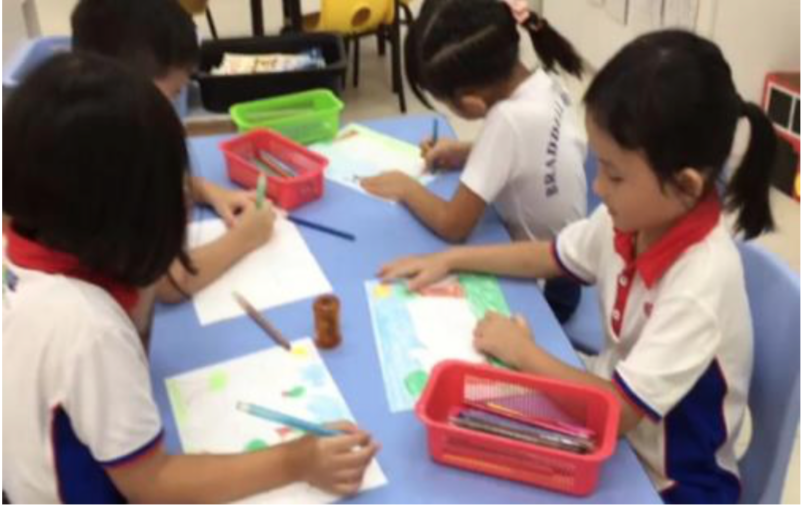
|
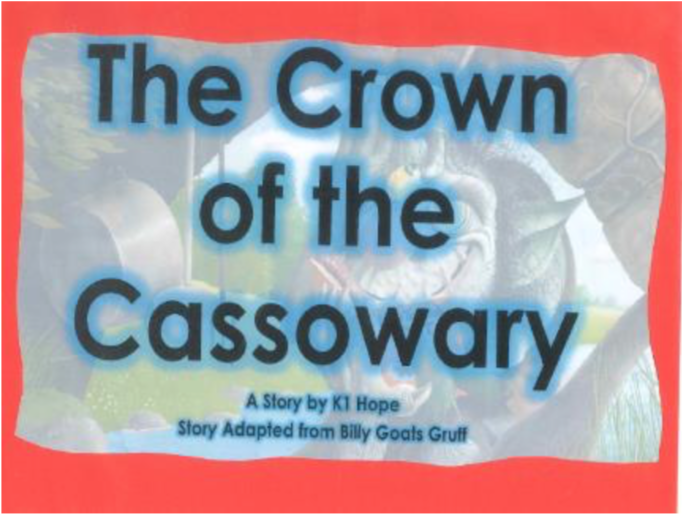
|
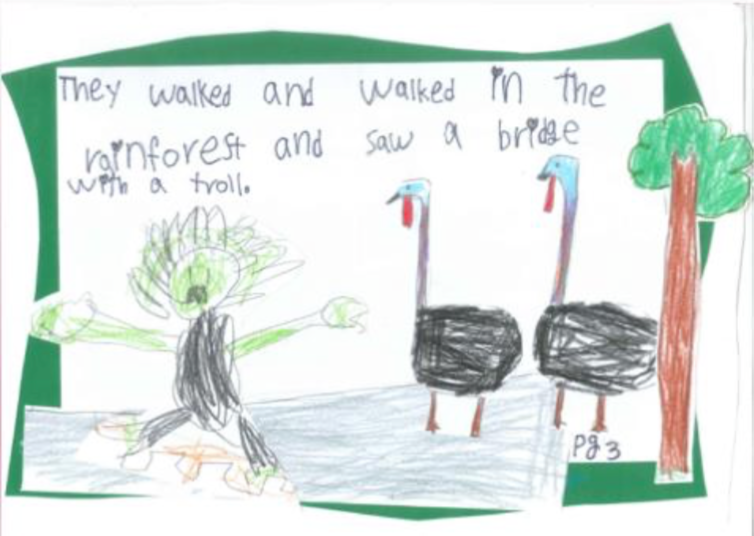
|
|---|---|---|
| Children created the pages of the story. | Cover of the cassowary class story. | One of the pages in the story. |
3. Sharing about the cassowary
The children shared what they have learnt about the cassowary to various audiences, including
their peers, parents, and the public.
(i) Show-and-tell in class
(ii) Interviews with peers and adults
(iii) Sharing at the centre's exhibition
(i) Show-and-tell in class
- The children drew what they learned about the cassowary in small groups.
- They took turns to talk about their learning points with their classmates.
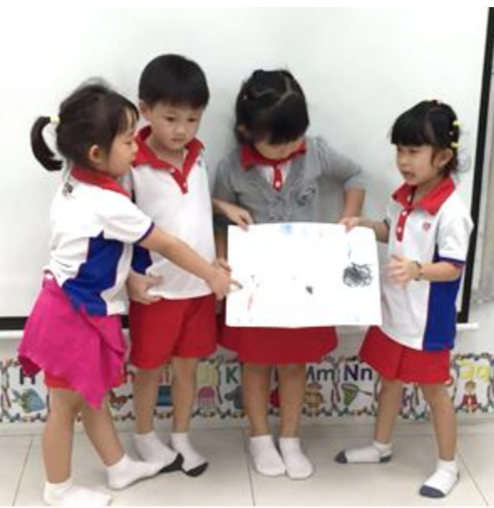
|
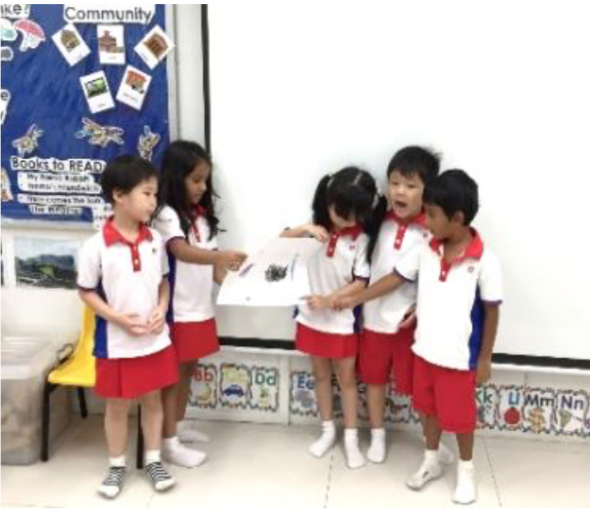
|
|---|---|
| Show-and-tell: Where does the cassowary live? | Show-and-tell: What is the lifecycle of the cassowary? |
(ii) Interviews with peers and adults
- The children conducted a series of interviews with their peers, teachers, principal, community and MP Mr. Seah Kian Peng about the cassowary.
- These interview sessions helped developed children’s listening and speaking skills.
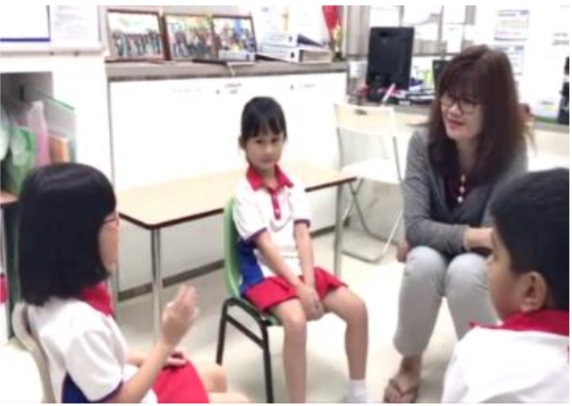
|

|
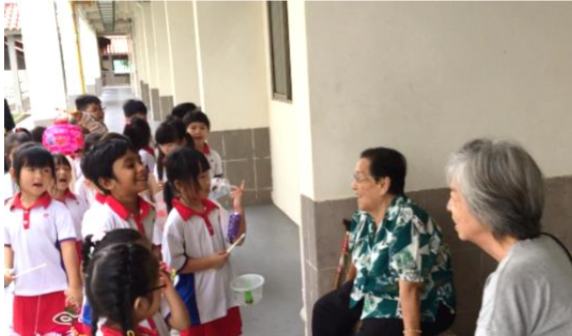
|
|---|---|---|
| Interview with Centre Principal |
Interview with MP
Mr. Seah Kian Peng
|
Street Interview with the community |
(iii) Sharing at the centre's exhibition
- The children presented their cassowary class story to their parents and PCF staff at the centre's exhibition. They also served as ambassadors and shared with their parents what they learnt about the cassowary in their exhibition booth.

|
|---|
| Children shared with parents and PCF staff what they had learnt about the cassowary during the centre's exhibition. |
- Through these experiences, the children gained confidence to speak in front of an audience. The entire process also helped the children to develop their communication skills and to become more expressive and articulate.
- The various sharing platforms also helped to create an awareness of the endangered bird.
Submitted by:
Anne Yeow, Centre Principal
Gynette Tee Chien Wei and Lacambacal Kollene Rae Marcelo , English Teachers
